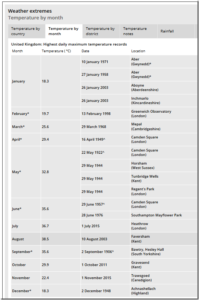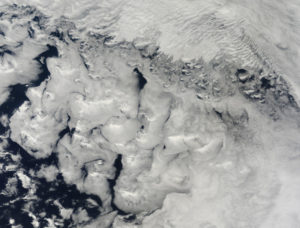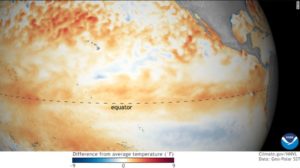by P. Homewood, February 27, 2019 in NotaLotofPeopleKnowThat
But let’s take a closer look.
Daily temperature extremes are not especially meaningful in themselves.
If global warming is responsible for yesterday’s record , was it also responsible for the record January temperature set in 1958? Or in March 1968, April 1949, May 1922, June 1957, September 1906 or December 1948, when records, which still stand, were also set?

…
by Susan Crockford, February 2019, in GWPF
Inuit paying the price of rising bear populations
The 2018 State of the Polar Bear report, published today by the Global Warming Policy Foundation, confirms that polar bears are continuing to thrive, despite recent reductions in sea ice levels. This finding contradicts claims by environmentalists and some scientists that falls in sea ice would wipe out bear populations.
The report’s author, zoologist Dr Susan Crockford, says that there is now very little evidence to support the idea that the polar bear is threatened with extinction by climate change.
Foreword
From 1972 until 2010,1 the Polar Bear Specialist Group (PBSG) of the International Union for the Conservation of Nature (IUCN) published comprehensive status reports every four years or so, as proceedings of their official meetings, making them available in electronic format. Until 2018 – a full eight years after its last report – the PBSG had disseminated information only on its website, updated (without announcement) at its discretion. In April 2018, the PBSG finally produced a standalone proceedings document from its 2016 meeting, although most people would have been unaware that this document existed unless they visited the PBSG website.
This State of the Polar Bear Report is intended to provide a yearly update of the kind of content available in those occasional PBSG meeting reports, albeit with more critical com- mentary regarding some of the inconsistencies and sources of bias present in the corpus of reports and papers. It is a summary of the state of polar bears in the Arctic since 2014, rela- tive to historical records, based on a review of the recent and historical scientific literature. It is intended for a wide audience, including scientists, teachers, students, decision-makers and the general public interested in polar bears and Arctic ecology.
…

by J.E. Kamis, February 25, 2019 in ClimateChangeDispatch
…
SUMMARY
Research study after research study has now proven beyond any doubt that the 350,000-square-mile subglacial Marie Byrd Mantle Plume and its associated geological features that are emitting massive amounts of ice melting heat and heated fluid onto the base of the Pine Island Glacier and Thwaites Glaciers.
Failure of the media to include in their numerous articles this telling scientific evidence which substantiates the significant and likely dominant role of this subglacial geologically induced heat flow in melting of West Antarctic glaciers is difficult to reconcile with proper scientific methodology.
A methodology which states that new and relevant data should be used to review old supposedly 100% settled theories.
Most of these research studies have been released one by one during the last three years which has led to minimizing their collective importance. Numerous previous Climate Change Dispatch articles written by this author beginning in 2014 have inexplicably been ignored by mainstream media outlets.
It’s time for the media to inform the public that by tying all this information together that a clear picture emerges concerning the significant impact of Antarctic subglacial geologically induced heat flow.
by Scott K. Johnson, February 25, 2019 in WUWT
The word “hysteresis” doesn’t immediately seem threatening; it hints at a portmanteau of “history” and “thesis”—a dense read, perhaps, but those never killed anyone. But that’s not what the word means. Hysteresis is a profound behavior some systems can display, crossing a sort of point-of-no-return. Dial things up just one notch, and you can push the system through a radical change. To get back to normal, you might have to dial it down five or six notches.
Earth’s climate system can provide examples. Take the conveyor-belt-like circulation of water in the Atlantic Ocean. Looking back at the past, you can see times that the circulation seems to have flipped into an alternate pattern regarding climatic consequences around the North Atlantic. Switching from one pattern to the other takes a significant nudge, but reversing it is hard—like driving up to the top of a ridge and rolling down into the next valley.
…

Stratocumulus clouds, like those in the lower two-thirds of this image, are common over the oceans.
NASA Earth Observatory
…
by GWPF, February 26, 2019
“El Niño conditions across the equatorial Pacific have come together, and we can now announce its arrival,” said Mike Halpert, deputy director, NOAA’s Climate Prediction Center, and ENSO forecaster.
NOAA gives a 55% chance of El Niño conditions persisting through the spring.
Sea surface temperatures in January — orange-red colors are above normal.
“While sea surface temperatures are above average, current observations and climate models indicate that this El Niño will be weak, meaning we do not expect significant global impacts through the remainder of winter and into the spring,” Halpert said.
…

La géologie, une science plus que passionnante … et diverse




